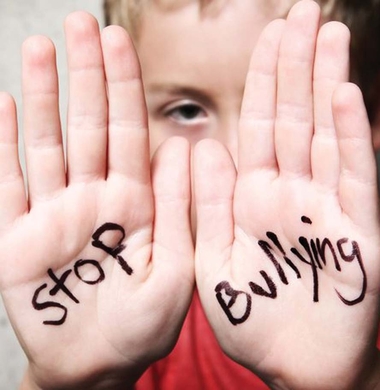Alarming statistics about kids who are bullied

by Mikel LePorte
Mental Health Columnist
As a fat, effeminate, emotional, and closeted gay kid growing up in a rural farm community, I was an obvious target for bullies. It started not long after the movie Ghostbusters when someone in the school nicknamed me the “Staypuff Marshmallow Man,” and it stuck.
I sought solace in band and choir, which didn’t win me any points with the jocks of the school. Next, I sought solace in the church. In fact, I became a zealot, which didn’t make me popular with, well, most people in the school.
Church, of course, became its own type of bully because I heard messages of how LGBTQ+ people were pedophiles, demon-possessed and would spend eternity in Hell. To say my high school experience was painful would be an understatement of epic proportions.
As kids across Oklahoma prepare to return to school, many are feeling the same way I did every day; dread. They worry about the constant bullying they will face.
The statistics are alarming. 10 percent of LGBTQ+ students report not going to school because of bullies. Thirty-three percent of LGBTQ+ high school students report being bullied on school property, and 27.1 percent report being cyberbullied. This bullying puts these students at greater risk for depression, suicidal ideation, misuse of drugs and alcohol, risky sexual behavior and a negative impact on their academics.
If you are an LGBTQ+ student reading this, I want to address you for a moment. First, I want to tell you that there is absolutely nothing wrong with being lesbian, gay, bi-sexual, transgender, queer, or questioning. Who you are is normal, and there is no reason to feel shame. I also want to offer you some tips on what to do if you are being bullied.
- Tell a teacher or parent. If you do not feel it is safe to do so, seek out another adult whom you feel it would be safe to tell.
- Keep a journal of the days/times of when the bullying occurs and what was said. If the bullying is happening online, take screenshots so you can show an adult or school officials.
- If you feel it is safe to ignore the bully and not react, do so. Please do not engage the bully if you believe they could get aggressive or physically harm you.
- If you are threatened or experience violence, please report this to the police.
- If one exists in your school, join a Gay-Straight Alliance group. If one does not exist, consider approaching school officials about starting one. Having a group of people you can tell your feelings to and discuss what is happening to you can be a way to alleviate some of the stress and emotion around being bullied. There really is strength in numbers.
Now I want to talk to the adults who either have teens who are being bullied, are educators in schools, or just know a teen who might be a target for bullying. Here are some things you can do to help.
- Accept LGBTQ+ youth as they are. Acceptance is especially important for family members of LGBTQ+ youth. Studies show that when there is a supportive adult in the family, these students are less likely to self-harm or commit suicide.
- Establish safe environments in schools. Work to add sexual orientation and gender identity protection into school anti-discrimination policies.
- Provide a safe place for students to talk about their sexual identity.
- Protect privacy. Do not disclose a student’s sexual identity to anyone, even parents.
- Create a Gay-Straight Alliance. It is important to note that if other non-curricular clubs exist, schools must allow a GSA to form.
- Create school programs that help students develop empathy.
Bullying is an epidemic in our country, and it is literally killing our teens and pre-teens. Let’s all work together to put an end to bullying!
Copyright The Gayly. 8/19/2019 @ 11:49 a.m. CST.





